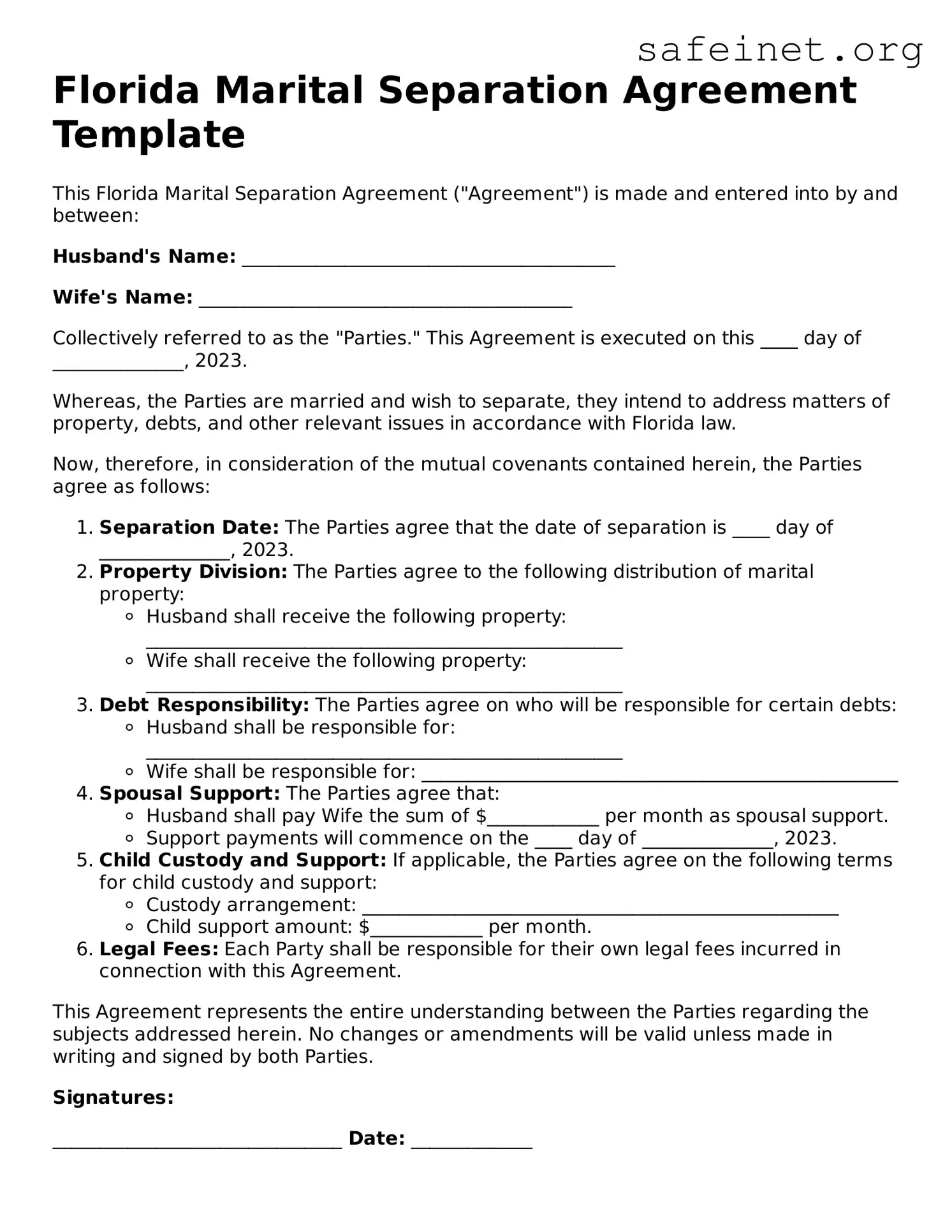What is a Florida Marital Separation Agreement?
A Florida Marital Separation Agreement is a legal document that outlines the terms of separation between spouses. It includes important details regarding the division of assets, child custody arrangements, support obligations, and other relevant matters. This agreement helps clarify each party’s rights and responsibilities while they live apart.
Is a Marital Separation Agreement legally binding in Florida?
Yes, a Marital Separation Agreement is legally binding once both parties sign it. However, it is advisable for both spouses to seek independent legal advice before signing to ensure that the agreement is fair and enforceable. Courts generally uphold these agreements as long as they are not found to be inequitable or unconscionable.
Do I need to file the Marital Separation Agreement with a court?
Filing the Marital Separation Agreement with the court is not mandatory. It is a private contract between the spouses. However, if the separation leads to divorce, the agreement may need to be filed as part of the divorce proceedings for the terms to be incorporated into the final divorce decree.
Can I modify the Marital Separation Agreement after it is signed?
Yes, modifications can be made to the Marital Separation Agreement if both parties agree to the changes. It is crucial to document any amendments in writing and have both parties sign the updated agreement. This ensures clarity and helps avoid potential disputes later on.
What happens if one party does not comply with the agreement?
If one party fails to comply with the terms of the agreement, the other party has the right to seek enforcement through the court. Depending on the situation, the court may uphold the original agreement, modify the terms, or impose penalties on the non-compliant party.
Can I use a Marital Separation Agreement if I am not planning to get divorced?
Absolutely. A Marital Separation Agreement can be useful for couples who wish to live separately yet remain legally married. It provides clarity and structure during the separation period, helping to manage issues related to property, finances, and child custody, even if divorce is not imminent.
How does child custody work in a Marital Separation Agreement?
Child custody arrangements can be detailed in the Marital Separation Agreement. Parents can specify joint or sole custody arrangements and outline visitation schedules. It is essential to address the children’s best interests in these arrangements, as the court ultimately prioritizes the welfare of the children in any legal context.
Are there any downsides to a Marital Separation Agreement?
While a Marital Separation Agreement offers many benefits, potential downsides exist. If not crafted carefully, the terms could be seen as unfair or lead to disputes later. Additionally, without proper legal counsel, parties may inadvertently waive rights or responsibilities. Seeking legal advice can mitigate these risks.
What should I include in my Marital Separation Agreement?
A comprehensive Marital Separation Agreement should include several key elements: descriptions of property division, financial responsibilities, child custody and support, handling debts, insurance provisions, and any other relevant considerations that reflect both parties’ needs and intentions during the separation.
How can I ensure my Marital Separation Agreement is fair?
To ensure fairness, both parties should participate in the negotiation process openly and honestly. Consulting with legal professionals can provide guidance on equitable terms. Consideration of each party’s contributions, needs, and future circumstances is vital in creating a balanced agreement that respects both parties’ interests.
